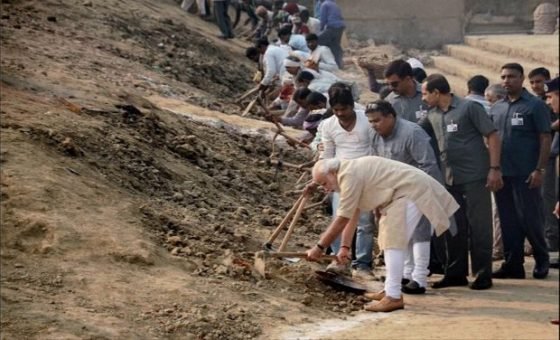Swachh Bharat Abhiyan – How far was it successful?

Gandhiji once said, ‘Sanitation is more important than Independence’.
Nearly half of the population of India defecate in the open.
On 2nd October 2014, ‘Swachh Bharat Mission’, the biggest ever cleanliness drive was launched to ensure hygiene, waste management & sanitation in India. It aimed to eradicate open defecation by 2nd Oct 2019 as a tribute to Mahatma Gandhi on his 150th birthday.
Through this program, govt builds toilets and community toilets for schools, houses and public places.
SBA is a centrally sponsored scheme. Funding for this program was set as 2 lakh crore. For North Eastern & Special category states, funding will be in 90:10 ratio by center and state. And for all other states, funding will be in 75:25 ratio.
World Bank approved $1.5 billion to support SBA.
2% Swachh Bharat Cess is being levied on all taxable services.
Companies can contribute to this program through ‘Corporate Social Responsibility (CSR)’.
100 Iconic heritage, spiritual and cultural places including ‘Taj Mahal’, ‘Golden Temple’, ‘Ajmer Sharif Dargah’ to be cleaned up under Swachh Bharat Mission.
Positive side :-
As per Government reports, as of April 2016, more than 1.5 crore household toilets, 65,108 community toilets and 11,705 public toilets have been constructed and 2.29 crore household toilets are still under construction.
Toilets and dustbins will be setup for every 500 metres in cities.
The issue of sanitation and the unhygienic conditions in India came into limelight and are recognized. This is the biggest step towards the Clean India.
It gives dignity to the cleaning staff.
This program has dedicated staff to conduct awareness programs and to work towards behavioral change.
This created employment opportunities.
Public health will be improved.
Many waterborne diseases like Cholera, Malaria, Dengue etc. can be prevented.
Healthcare costs will be reduced, thereby contributes to GDP growth.
Tourism sector will benefit.
People have a tendency to throw garbage on the dirty areas. Once all the public places are clean, no more dirty areas will exist.
To manage solid waste, electricity is being produced from it.
Maharashtra govt introduced Anti-spitting law.
Loopholes :-
There are no proper dust bins are available in the public places still.
Apart from the media appearances, almost no one attempts to clean public places.
Till the problem of slums is solved, SBA cannot be successful to the full extent.
Conclusion :-
Swachh Bharat Abhiyan is indeed successful in acknowledging the unhygienic conditions in India. Instead of ignoring the sanitation issue, working towards the clean India is undoubtedly a good thing. Though the target seems unbelievable by 2019, the problem of open defecation will be reduced to a great extent by then. That’ll be enough to call this program successful.